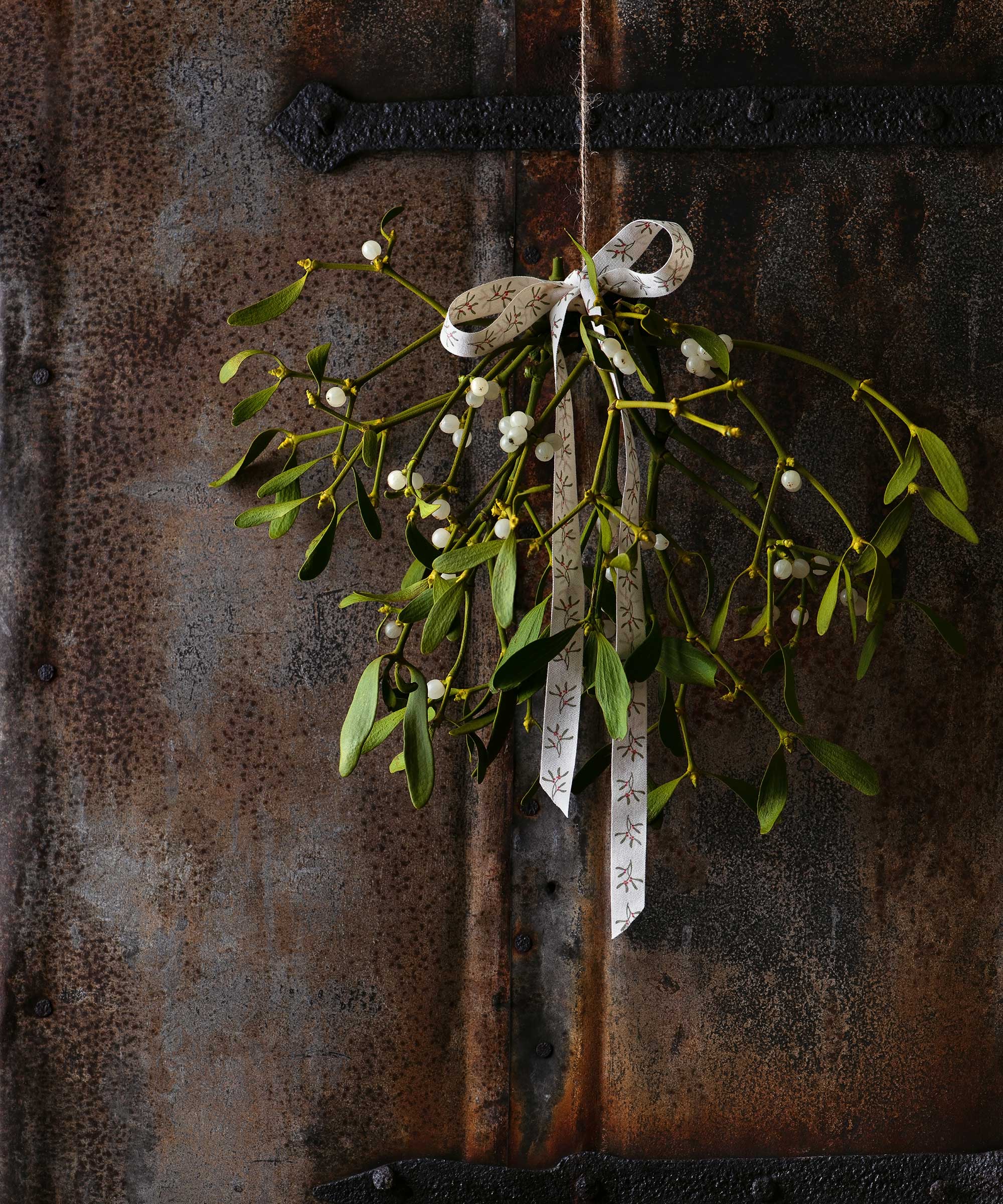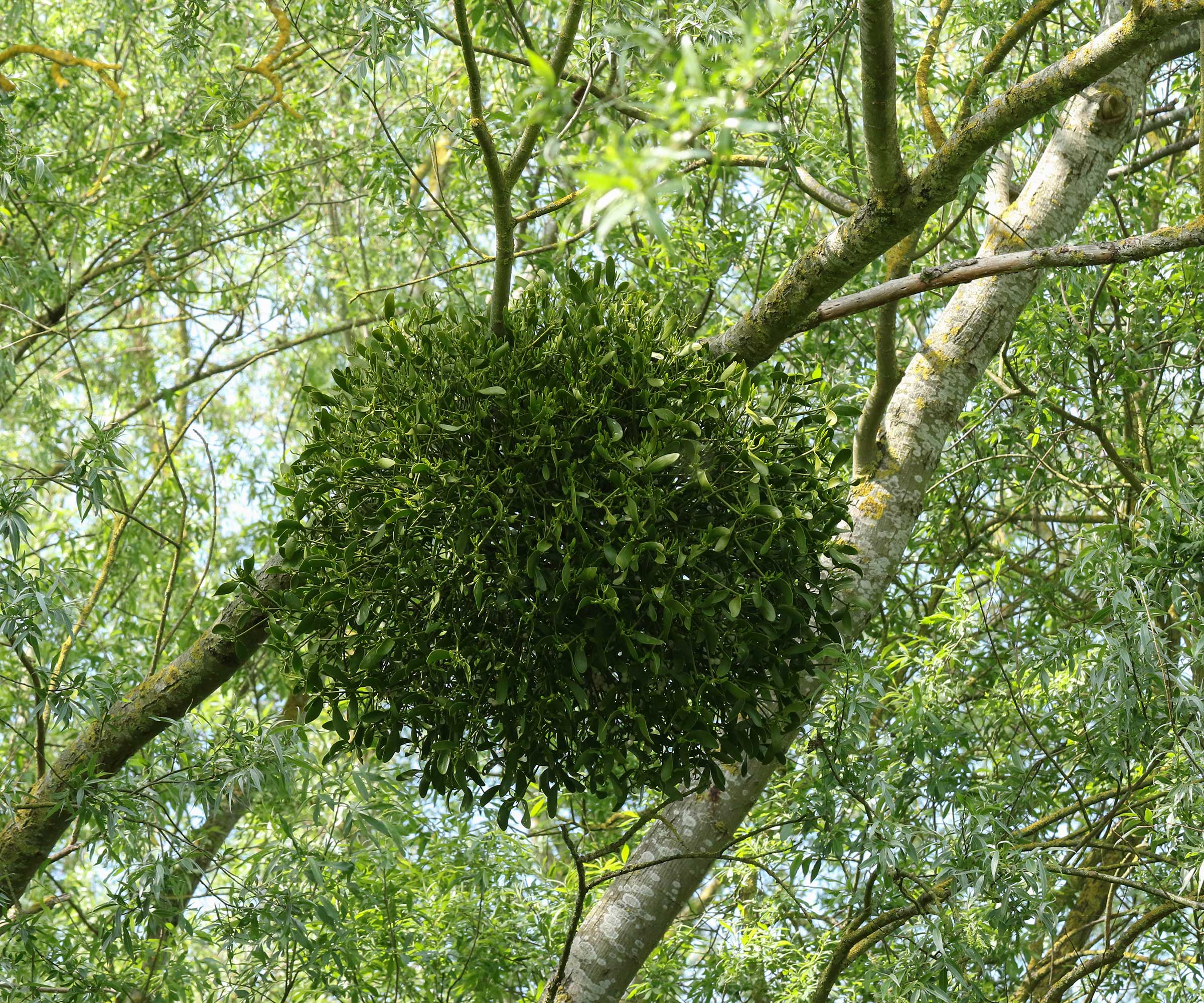How to care for mistletoe indoors – and other top tips for using this fabulously festive plant
Decorating with mistletoe this year? This advice will help you get the most from your display


Hanging mistletoe is a classic holiday tradition – and one that I particularly love. In fact, my apartment is currently filled with bunches hanging from beams, bookcases and wall hooks, all tied with cherry-red ribbon.
It's a simple look that, along with other festive foliage, offers a sense of seasonal magic. But there are a few useful tips to know if you plan on weaving this plant into your Christmas decorating scheme.

Hanging mistletoe is a traditional way to decorate for Christmas
3 top tips for indoor mistletoe
From sensible sourcing to where to hang it in your home, these tips are essential considerations when decorating with mistletoe.

It's well-loved for its pearly white berries
1. Source it carefully
'Mistletoe is an interesting, evergreen plant,' says arborist Ned Cromack. 'The seeds spread via bird droppings, and root into the cambium of trees where they land. The plants use nutrients from these host trees to grow, forming ball-shaped clusters.'
Sometimes, it's possible to harvest mistletoe yourself, especially if you've grown it in your own garden. However, it rarely grows naturally at head height, Ned points out. 'This means, picking it yourself usually means getting up high, which can be dangerous.
'If you've spotted some in your backyard, you could hire a climbing arborist to harvest some for you,' Ned continues. 'However, it would be cheaper to source some that's already been picked.'
Farmers markets and florists sometimes have it for sale around the festive season. 'Purchasing in-person rather than shopping online will help ensure you start with the best quality,' says Althea Wiles, the owner of Rose of Sharon Floral Design Studio. 'Look for mistletoe with bright green leaves and firm, healthy berries.'
Design expertise in your inbox – from inspiring decorating ideas and beautiful celebrity homes to practical gardening advice and shopping round-ups.
Top tip: Always obtain permission from the landowner before picking mistletoe from outside of your own backyard.

Ned is a qualified arborist and the founder of The Bath Tree Company. Starting his career in one of the UK’s leading tree nurseries in 2010, he went on to spend over a decade as a tree climber across the UK, Europe, New Zealand and Australia. For him, arboriculture has always been more of a fascination than a job, and an industry that never ceases to inspire.

Althea Wiles is the owner and creative director of Rose of Sharon Floral Design Studio in the Ozark Mountains region of the United States. She is also the founder and education director of J Althea Creative, a florist education consulting program. Althea earned her Bachelor of Arts degree from Hendrix College and then completed her Arkansas Master Florist Certification. Her design studio takes part in 75-100 weddings and events annually and has been recognized by national and regional publications.

Mistletoe grows on host trees
2. Keep it fresher for longer
Once you've brought your mistletoe home, there are a few ways to help it stay looking its best.
'For optimal freshness, place the mistletoe in a cool spot with good airflow and away from direct sunlight, as this can cause it to dry out quickly,' says Autumn Hilliard-Knapp of Perfect Plants Nursery. Just like your houseplants, keep it away from central heating, too.
'You can also mist it regularly with water to keep it hydrated and healthy,' Althea adds. This dotted glass mister from Terrain has a pretty design.

Keep mistletoe away from heat sources
3. Remember, it's toxic
Both Althea and Autumn warn that mistletoe is poisonous, so should be kept well away from pets and children. Remember to wash your hands thoroughly after handling it, too – or, ideally, wear gloves.
As your mistletoe dries out, the toxic berries may fall onto the floor and nearby furniture. So, be sure to clean these up as soon as possible.
Top tip: Note that many other types of festive foliage and plants are also toxic, including amaryllis.

All parts of mistletoe are poisonous
FAQs
How long does mistletoe last indoors?
Kate Blott of Atlas Flowers suggests storing mistletoe in a cool place until the opportune moment. Ideal locations include the brisk outdoors or a shed or garage, she says. 'A light spray of cold water can revive any dry spots, maintaining its lush appearance.' In these conditions, it will stay vibrant for up to a month, she says.
Once brought into your home, cut mistletoe will last a week or so – sometimes longer if you keep it away from central heating and mist it regularly.
Which trees does mistletoe grow on?
There are many different varieties of mistletoe around the world, and these grow on a wide range of trees. In the US, oaks, poplars, and maples are common hosts, amongst others. In the UK, it is often found in poplars, apples, and limes, to name a few.
Mistletoe does not usually kill trees, but it can weaken them. For this reason, homeowners with mistletoe in their yard may choose to have affected branches pruned off.
My mistletoe may be up, but my holiday decorating isn't finished quite yet. The next step is choosing a Christmas tree – and I'm currently perusing Christmas tree ideas that fit with a more natural, hand-crafted theme.

Holly started writing about gardening five years ago, and she is a regular contributor to Homes & Gardens. She has also written many gardening features for Woman & Home and Real Homes, too. She has previous experience as a professional gardener, where she helped to plant and maintain private gardens. Holly has also looked after allotment plots over the years and loves to grow her own flowers and veggies from seed. In her spare time, she enjoys visiting local gardens, botanical drawing, and tending to her ever-growing collection of houseplants.